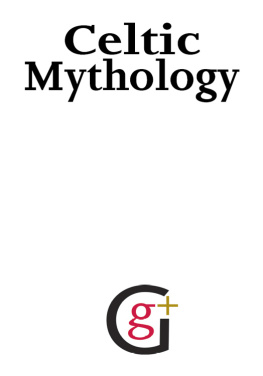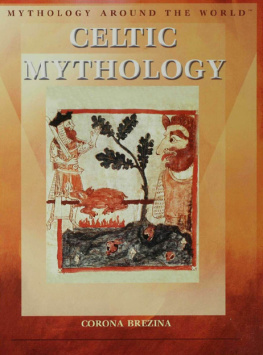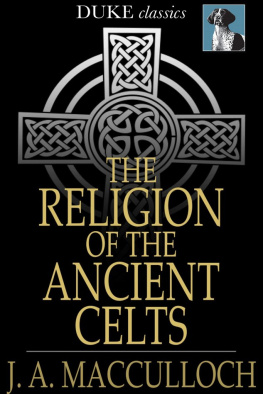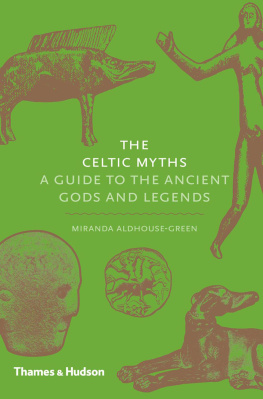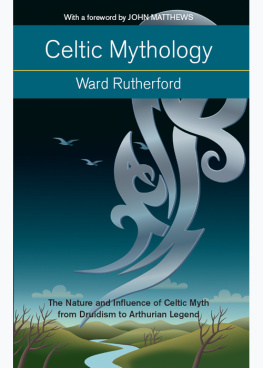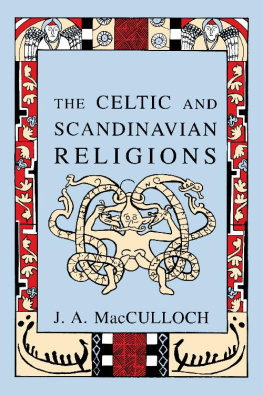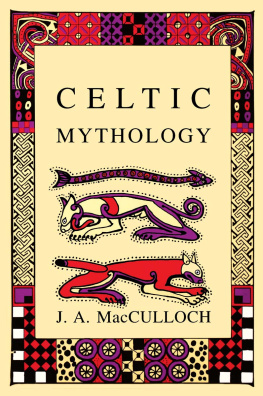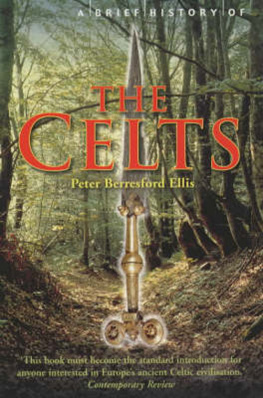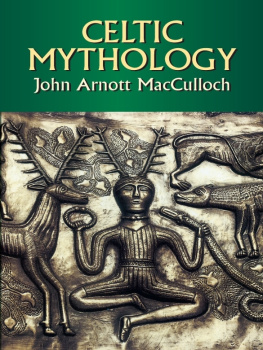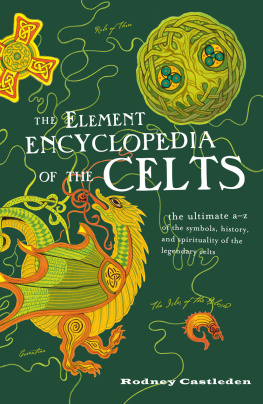Introduction
Earliest References
In the chronicles of the classical nations for about five hundred years previous to the Christian era there are frequent references to a people associated with these nations, sometimes in peace, sometimes in war, and evidently occupying a position of great strength and influence in the Terra Incognita of Mid-Europe. This people is called by the Greeks the Hyperboreans or Celts, the latter term being first found in the geographer Hecatsus, about 500 B.C.
Herodotus, about half a century later, speaks of the Celts as dwelling beyond the pillars of Hercules i.e. , in Spainand also of the Danube as rising in their country.
Aristotle knew that they dwelt beyond Spain, that they had captured Rome, and that they set great store by warlike power. References other than geographical are occasionally met with even in early writers. Hellanicus of Lesbos, an historian of the fifth century B.C., describes the Celts as practising justice and righteousness. Ephorus, about 350 B.C., has three lines of verse about the Celts in which they are described as using the same customs as the Greekswhatever that may meanand being on the friendliest terms with that people, who established guest friendships among them. Plato, however, in the Laws, classes the Celts among the peoples who are drunken and combative, and much barbarity is attributed to them on the occasion of their irruption into Greece and the sacking of Delphi in the year 273 B.C. Their attack on Rome and the sacking of that city by them about a century earlier is one of the landmarks of ancient history.
The history of this people during the time when they were the dominant power in Mid-Europe has to be divined or reconstructed from scattered references, and from accounts of episodes in their dealings with Greece and Rome, very much as the figure of a primval monster is reconstructed by the zoologist from a few fossilised bones. No chronicles of their own have come down to us, no architectural remains have survived; a few coins, and a few ornaments and weapons in bronze decorated with enamel or with subtle and beautiful designs in chased or repouss workthese, and the names which often cling in strangely altered forms to the places where they dwelt, from the Euxine to the British Islands, are well-nigh all the visible traces which this once mighty power has left us of its civilisation and dominion. Yet from these, and from the accounts of classical writers, much can be deduced with certainty, and much more can be conjectured with a very fair measure of probability. The great Celtic scholar whose loss we have recently had to deplore, M. d'Arbois de Jubainville, has, on the available data, drawn a convincing outline of Celtic history for the period prior to their emergence into full historical light with the conquests of Csar, and it is this outline of which the main features are reproduced here.
Golden Age of the Celts
But we are anticipating, and must return to the period of the origins of Celtic history. As astronomers have discerned the existence of an unknown planet by the perturbations which it has caused in the courses of those already under direct observation, so we can discern in the fifth and fourth centuries before Christ the presence of a great power and of mighty movements going on behind a veil which will never be lifted now. This was the Golden Age of Celtdom in Continental Europe. During this period the Celts waged three great and successful wars, which had no little influence on the course of South European history. About 500 B.C. they conquered Spain from the Carthaginians. A century later we find them engaged in the conquest of Northern Italy from the Etruscans. They settled in large numbers in the territory afterwards known as Cisalpine Gaul, where many names, such as Mediolanum (Milan), Addua (Adda), Viro-dunum (Verduno), and perhaps Cremona ( creamh , garlic), Towards the end of the fourth century they overran Pannonia, conquering the Illyrians.
Alliances with the Greeks
All these wars were undertaken in alliance with the Greeks, with whom the Celts were at this period on the friendliest terms. By the war with the Carthaginians the monopoly held by that people of the trade in tin with Britain and in silver with the miners of Spain was broken down, and the overland route across France to Britain, for the sake of which the Phocans had in 600 B.C. created the port of Marseilles, was definitely secured to Greek trade. Greeks and Celts were at this period allied against Phnicians and Persians. The defeat of Hamilcar by Gelon at Himera, in Sicily, took place in the same year as that of Xerxes at Salamis. The Carthaginian army in that expedition was made up of mercenaries from half a dozen different nations, but not a Celt is found in the Carthaginian ranks, and Celtic hostility must have counted for much in preventing the Carthaginians from lending help to the Persians for the overthrow of their common enemy. These facts show that Celtica played no small part in preserving the Greek type of civilisation from being overwhelmed by the despotisms of the East, and thus in keeping alive in Europe the priceless seed of freedom and humane culture.
Alexander the Great
When the counter-movement of Hellas against the East began under Alexander the Great we find the Celts again appearing as a factor of importance. In the fourth century Macedon was attacked and almost obliterated by Thracian and Illyrian hordes. King Amyntas II. was defeated and driven into exile. His son Perdiccas II. was killed in battle. When Philip, a younger brother of Perdiccas, came to the obscure and tottering throne which he and his successors were to make the seat of a great empire he was powerfully aided in making head against the Illyrians by the conquests of the Celts in the valleys of the Danube and the Po. The alliance was continued, and rendered, perhaps, more formal in the days of Alexander. When about to undertake his conquest of Asia (334 B.C.) Alexander first made a compact with the Celts who dwelt by the Ionian Gulf in order to secure his Greek dominions from attack during his absence. The episode is related by Ptolemy Soter in his history of the wars of Alexander.
The Sack of Rome
We have mentioned two of the great wars of the Continental Celts; we come now to the third, that with the Etruscans, which ultimately brought them into conflict with the greatest power of pagan Europe, and led to their proudest feat of arms, the sack of Rome. About the year 400 B.C. the Celtic Empire seems to have reached the height of its power. Under a king named by Livy Ambicatus, who was probably the head of a dominant tribe in a military confederacy, like the German Emperor in the present day, the Celts seem to have been welded into a considerable degree of political unity, and to have followed a consistent policy. Attracted by the rich land of Northern Italy, they poured down through the passes of the Alps, and after hard fighting with the Etruscan inhabitants they maintained their ground there. At this time the Romans were pressing on the Etruscans from below, and Roman and Celt were acting in definite concert and alliance. But the Romans, despising perhaps the Northern barbarian warriors, had the rashness to play them false at the siege of Clusium, 391 B.C., a place which the Romans regarded as one of the bulwarks of Latium against the North. The Celts recognised Romans who had come to them in the sacred character of ambassadors fighting in the ranks of the enemy. The events which followed are, as they have come down to us, much mingled with legend, but there are certain touches of dramatic vividness in which the true character of the Celts appears distinctly recognisable. They applied, we are told, to Rome for satisfaction for the treachery of the envoys, who were three sons of Fabius Ambustus, the chief pontiff. The Romans refused to listen to the claim, and elected the Fabii military tribunes for the ensuing year. Then the Celts abandoned the siege of Clusium and marched straight on Rome. The army showed perfect discipline. There was no indiscriminate plundering and devastation, no city or fortress was assailed. We are bound for Rome was their cry to the guards upon the walls of the provincial towns, who watched the host in wonder and fear as it rolled steadily to the south. At last they reached the river Allia, a few miles from Rome, where the whole available force of the city was ranged to meet them. The battle took place on July 18, 390, that ill-omened dies Alliensis which long perpetuated in the Roman calendar the memory of the deepest shame the republic had ever known. The Celts turned the flank of the Roman army, and annihilated it in one tremendous charge. Three days later they were in Rome, and for nearly a year they remained masters of the city, or of its ruins, till a great fine had been exacted and full vengeance taken for the perfidy at Clusium. For nearly a century after the treaty thus concluded there was peace between the Celts and the Romans, and the breaking of that peace when certain Celtic tribes allied themselves with their old enemy, the Etruscans, in the third Samnite war was coincident with the breaking up of the Celtic Empire.




